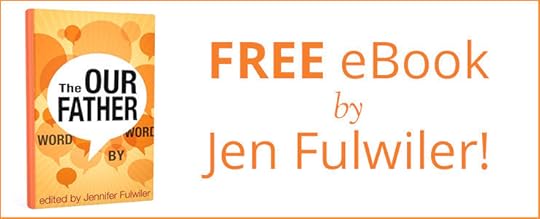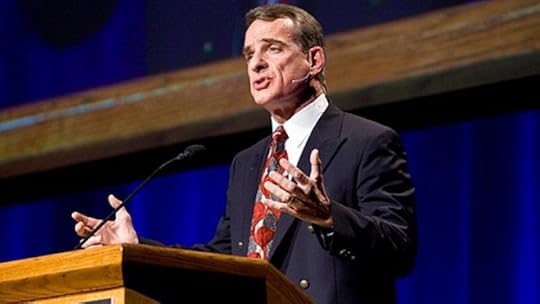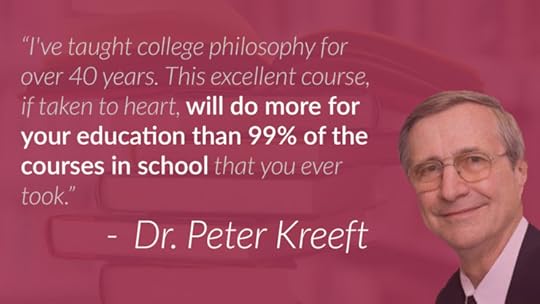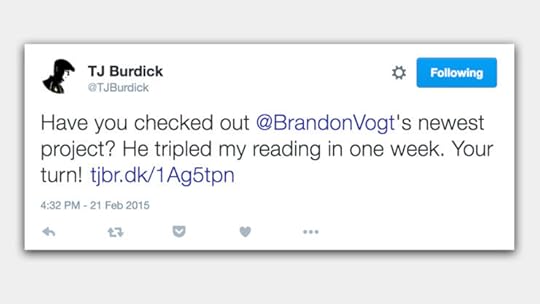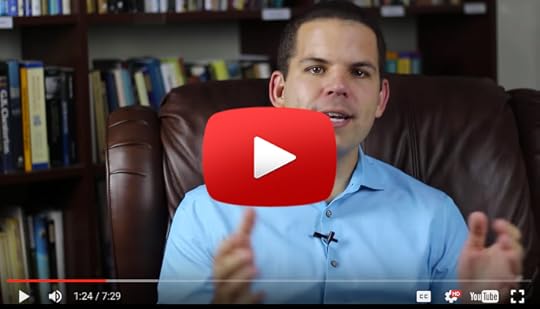Brandon Vogt's Blog, page 8
July 8, 2016
Book Giveaway (10 copies): “Hard Sayings: A Catholic Approach to Answering Bible Difficulties”
“Find out how much God has given you and from it take what you need; the remainder is needed by others.” — St. Augustine
Since I’ve built up a large collection of extra books and resources, every week I give some away absolutely free, no strings attached. Each giveaway lasts seven days with a new one beginning every Friday. You can enter any time during the week. Check out my past giveaways here.
Thanks to Catholic Answers, today I’m giving away TEN copies of a great new book by Trent Horn, Hard Sayings: A Catholic Approach to Answering Bible Difficulties. Learn more and enter below!
Hard Sayings: A Catholic Approach to Answering Bible Difficulties
by Trent Horn
Catholic Answers Press, 350 pages, hardcover
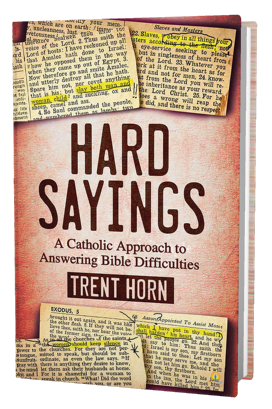 Have you ever read something in the Bible that made you just scratch your head? Has a skeptic ever challenged you to defend a seemingly scandalous verse of Scripture?
Have you ever read something in the Bible that made you just scratch your head? Has a skeptic ever challenged you to defend a seemingly scandalous verse of Scripture?
You’re not alone. The Bible contains more than a few “hard sayings” (John 6:60): ancient idioms, apparent contradictions, myth-like events and figures, and passages that seem to be embarrassingly out of step with modern culture or science.
How can a Catholic reconcile such things with his own faith, and with what the Church teaches about the inspiration and inerrancy of Sacred Scripture?
Don’t worry. As Trent Horn explains in Hard Sayings, God’s revelation in the Bible is not something Catholics need to be ashamed of or read with a mental reservation. Trent examines dozens of the most confounding passages in Scripture and offers clear, reasonable, Catholic explanations to unlock their true meaning. He also provides basic principles for reading and interpreting Scripture that the wisdom of the Church has developed over the centuries.
I’m using Gleam to help with the giveaway, which is cool because it allows you multiple entries for posting on Facebook, sharing on Twitter, etc. Click below to enter:
(If you’re reading this through email or RSS and don’t see the giveaway widget, click here.)
By entering this giveaway you agree to occasionally receive email updates from me—no spam, just updates about free books, cool links, and exciting news.
The winner(s) will be randomly selected next Friday and the books will be sent out, free of charge, shortly thereafter.
(Since I’m covering the shipping costs, only residents within the continental United States are eligible to win.)
The post Book Giveaway (10 copies): “Hard Sayings: A Catholic Approach to Answering Bible Difficulties” appeared first on Brandon Vogt.





July 7, 2016
[VIDEO] The crazy things my family does in the backyard after work…
So I came home from work today and the kids wanted to film a basketball mixtape in the backyard. Lookout Golden State Warriors!
Just FYI, that’s a regulation 10-foot hoop…
Featuring Isaiah (7), Teresa (5), Augustine (4), Zelie (3 months), and Daddy (ageless.)
PS. In case you missed it on Facebook, here was Augustine dancing it out on the Fourth of July (yes, our family are clearly Lil John fans.)
The post [VIDEO] The crazy things my family does in the backyard after work… appeared first on Brandon Vogt.





June 30, 2016
5 Surprising Facts from the Latest U.S. Poll About God and Atheism
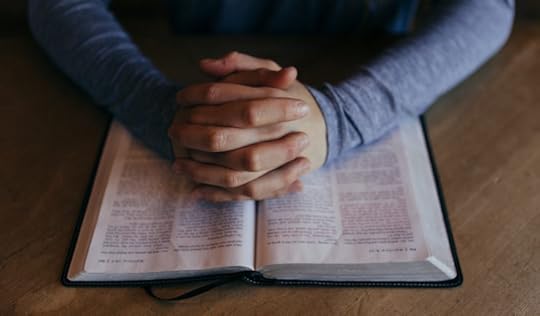
CARA is a national, non-profit research group affiliated with Georgetown University. It conducts social scientific studies about the Catholic Church. Founded in 1964, CARA has three major dimensions to its mission:
to increase the Church’s self understanding
to serve the applied research needs of Church decision-makers
to advance scholarly research on religion, particularly Catholicism
CARA’s latest research concerns religious belief in the United States. It’s a multi-phase project in its earliest stages, but the group regular offer previews of their findings on Twitter. Here’s the latest chart:
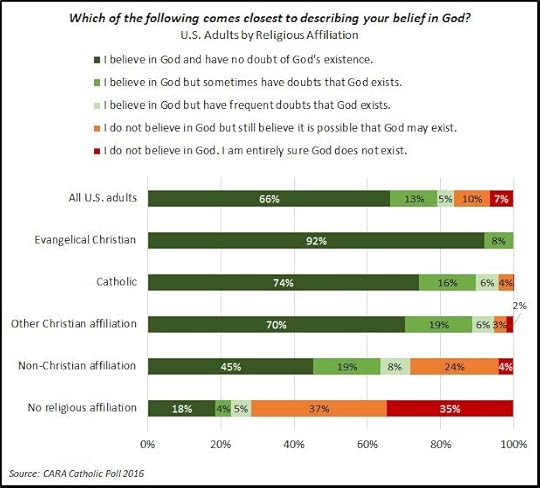
Five things immediately jump out to me from this data:
1. An explosion of atheism.
According to the CARA data, roughly 17% (!!) of American adults identify as atheists (i.e., they say “I do not believe in God…”). That’s about 3-4x higher than I’ve ever seen it measured by Pew, Barna, or other research groups.
2. The rise of “hard” atheists.
What might be even more surprising is the rise of the “hard” atheists. Atheists often distinguish between “hard” (or “strong”) atheism, which positively says “God does not exist”, and “soft” (or “weak”) atheism, which only says “I don’t believe in God” or “I lack belief in God.” According to CARA, about 7% of Americans identify as “hard” atheists, which again is at least 3-4x higher than I’ve ever seen it measured.
3. The uber-confident Evangelical Christians.
Evangelical Christians almost always come out best on surveys like this. They display better knowledge, firmer commitment, and more impressive retention. But I’m still surprised by the remarkable confidence shown here: 92% of Evangelicals say they believe in God and have no doubt of his existence. Think about that. They’re not saying they have some doubts or little doubts. They’re saying they have zero doubt that God exists–impressive! Also, virtually no Evangelical Christians have “frequent doubts about God.” Contrast that with at least 5-8% of every other religious group which report frequent doubts.
4. The 2.28 million Catholic atheists.
Confusingly, 4% of respondents identified as Catholic and also said “I do not believe in God but still believe it is possible that God may exist.” Assuming there are roughly 57 million Catholic adults in America, that means at least 2.28 million Catholics don’t believe in God. If that’s not a catechesis problem, I don’t know what is!
5. The believing “nones.”
One of the most common mistakes in religion reporting today is equating the “nones” (i.e., those with no religious affiliation) with atheists. But most religious studies show that huge numbers of the “nones” still believe in God, still have spiritually active lives, and many even go to church. CARA’s data confirms this. Roughly 27% of “nones” say they believe in God and another 37% are open to his existence.
Overall, the CARA picture is a mixed bag for Catholics. On the one hand, it reveals that atheists are on the rise and Catholics are noticeably less confident about their faith than our Protestant brethren. But there are also signs of hope. One is that more than half of the “nones” either believe in God or are open to God. The harvest is ripe, and we need to befriend those people and help them personally encounter the Lord.
That’s our challenge today, but then again, it’s always been the challenge of the Church.
The post 5 Surprising Facts from the Latest U.S. Poll About God and Atheism appeared first on Brandon Vogt.





June 22, 2016
St. Thomas More, Saint for All Seasons
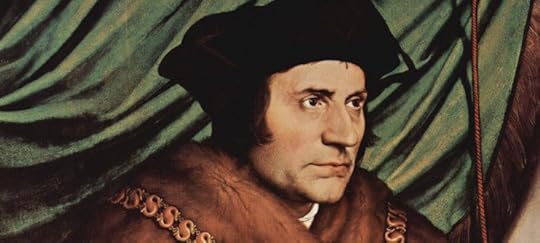
Thanks to the 1966 film, A Man for All Seasons, which won Oscars for Best Picture and Best Actor, millions of people have witnessed the remarkable courage of St. Thomas More. With his feast day today, I’d like to focus on three lessons from his life about rights and responsibilities, core themes of Catholic social teaching.
First, Thomas reminds us that we’re all responsible for upholding the rights of others.When it comes to rights and duties, today’s world usually gets one side of the equation right. We strongly emphasize our own rights, demanding the right to do what we want, say what he want, and live where we want. And none of this is inherently bad, for to an extent, Catholic social teaching would agree. The Church maintains a long list of basic rights that all people deserve to claim—food, housing, healthcare, work, etc. Yet along with those rights we have corresponding responsibilities. These duties root themselves in our common brotherhood, the fact that we’re all created by the same God and are members of the same eternal family. Thus we’re responsible for helping each other flourish.
Thomas knew this well and it explains why he consistently submitted his own wants to the needs of others: to the material needs of the poor, to the legal needs of the oppressed, and to the demands of truth and conscience. For every right we have, we have the duty to protect that right in others.
Second, Thomas shows that accepting these duties often leads to discomfort. Thomas was no fool. He knew that by refusing to take King Henry’s oath, and honoring his Act of Succession, he would likely face trouble. He sensed that family and friends would not understand, and that standing for the truth would cost his job, his home, and probably his life. But he also knew it was the right thing to do. He prayed near the end of his life:
“Give me, good Lord, a longing to be with you: not for the avoiding of the calamities of this wicked world, nor of the pains of hell.”
When Thomas was eventually sentenced to death, as expected, he was prepared due to a lifetime of small sacrifices. He regularly ate leftover scraps, giving his best food away to the poor. On many nights he slept on the floor, with a log for his pillow. These small acts of intentional discomfort trained him for the greater discomfort he suffered later on—imprisonment, isolation, and execution. We too can train ourselves so that when duty requires uncomfortable choices, we’re ready to embrace them with heroic virtue.
Third, Thomas demonstrates that standing up for what is right doesn’t have to be gloomy. Throughout his life, he responded to his many difficulties with smiles and warmth. At his execution, the ever-cheerful Thomas calmed his executioner with some wisecracks: “Cheer up, man, and don’t mind doing your job. My neck is very short, so see you aim straight. You don’t want to spoil your reputation!” When the executioner lifted up his axe, ready for the final blow, Thomas cried: “Stop! I must put my beard aside. It would be a shame to chop it off. After all, my poor beard is not accused of treason.”
Thomas answered St. Teresa of Avila’s plea: “God protect me from gloomy faced saints.” Our attitude often drives our ability to respond well to difficulties. If we’re constantly cynical, or complain about every small hardship we suffer, we’ll never develop the moral fiber needed to stand against truly formidable opposition. Thomas knew that laughing and joking diffused the darkness his trials threatened to bring, and it brightened the lives of people around him.
St. Thomas More is certainly a “man for all seasons” and especially today, when religious liberty is threatened and Christians around the world face persecution. May we follow his lead by upholding the rights of others, embracing small sacrifices, and suffer our difficulties without gloom.
(Adapted from my book, Saints and Social Justice: A Guide to Changing the World.)
The post St. Thomas More, Saint for All Seasons appeared first on Brandon Vogt.





June 16, 2016
[FREE eBook] “The Our Father: Word by Word” by Jennifer Fulwiler
Jen Fulwiler is one of the smartest, most-accomplished people I know. She’s an atheist-to-Catholic convert, mother of six, a Sirius XM radio host, author of the bestselling memoir Something Other Than God (which I LOVED and interviewed her about), and a blogger at JenniferFulwiler.com (formerly ConversionDiary.com).
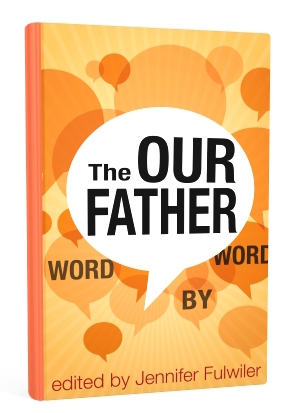 Jen recently asked several bloggers and writers to contribute to a new eBook she edited, which was centered on the “Our Father” prayer. She asked each writer to reflect on just one word or phrase in the prayer. The result was a beautiful tapestry of insight and devotion.
Jen recently asked several bloggers and writers to contribute to a new eBook she edited, which was centered on the “Our Father” prayer. She asked each writer to reflect on just one word or phrase in the prayer. The result was a beautiful tapestry of insight and devotion.
And guess what?
Jen has decided to give the PDF eBook version away for FREE (!!).
Just click below to download your copy:
Click here –> Download FREE “Our Father” PDF eBook!
She asked me to write on the word “art”—from the first sentence, “Our Father who art in heaven…”—and the phrase “as it is” from later in the prayer. I’m sharing my entire first reflection below, but be sure to download the FREE book which contains my other chapter, plus entries from dozens of brilliant Catholic writers (including several chapters by Jen herself.)
The God Who Art
by Brandon Vogt
When I was younger, I believed God lived in outer space.
I just knew he dwelled on some distant, undiscovered asteroid in the far reaches of the Milky Way. And I figured that one day, a group of astronauts would accidentally discover God’s hidden heaven. “Aw shucks,” God would bristle, snapping his fingers in frustration, “you found me.”
Now that I’m (slightly) older, I see how unlikely this scenario is. We will never find God deep in outer space, nor in an African cave, nor on a Brazilian mountaintop. God’s fullness simply won’t be discovered in our galaxy — not because he isn’t real, but because he is beyond our categories of space and time.
When Jesus prays to God who “art” in heaven, he isn’t providing clues to the location of God’s secret lair. Instead, he’s hinting at a foundational fact of the cosmos: “God is. He is the ground of all being, and wherever ‘he is,’ there is heaven.” Or as the Catechism more clearly states, the prayer’s opening expression does not refer to “a place, but a way of being.”
God’s being is unique. He isn’t one being among billions and he doesn’t live in one place amidst many. So to the atheist who begs for evidence of God’s existence — a crater from God’s heavenly asteroid or a hair from his dangling beard—the Church says, “Impossible!” It can’t happen — not because God doesn’t exist, but because he transcends all of our earthly categories. He’s greater than all labels, all boxes, all definitions. He can’t be grasped, he can’t be measured and probed; he can’t be “bigger”, “closer”, “wiser”, or “older” than anything else in our world: he simply “is”; Our Father who “art.”
And that brings us to the book of Exodus. For there, after being charged with delivering a message to his people, Moses asks God’s name in exchange. God, who can never lie, replies bluntly, “I AM.” Later, when Jesus’ own identity is questioned, he too adopts the same puzzling name: “Before Abraham was, I AM.”
The title is confusing, especially when we try to fit it into our own understanding of identity: “You are what? No, really, who are you? Where are you?” But when placed next to the opening words of Jesus’ prayer, the answer makes more sense: God just…is.
Which finally takes us to the people who best understood this identity: the saints. Note how almost all the saints are known not only by their names, but also by their locations. St. Clement of Rome, St. Francis de Sales, Blessed Teresa of Calcutta, and St. Therese of Lisieux all find their names intimately tied to their places of being. The saints show us that, at least here on earth, your “where” is wrapped up in your “who.”
And it’s the same with you and me: right now we’re known as Brandon from Casselberry, Jonathan from Albany, or Cindy from down the street. But as St. Paul says — and here’s what the saints know best — we must always remember that heaven is our true homeland, the place ultimately connected to our identity and the land our souls longs for.
We were made not to be “Joe who art in Albuquerque” but “Joe who art in heaven.”
St. John Chrysostom puts it this way: Jesus refers to God as the one “who art in heaven” not to limit God to the heavens, but to lift us from the earth. The “art” doesn’t so much point to where God is right now, but to where we eventually will be.
So as we pray to “Our Father who art,” may we ponder the startling reality that God simply is, but may we also sail onward to our true homeland. As we draw closer to “Our Father,” the One “who is,” we near the day when we too will forever be “art” in heaven.
“Heaven, the Father’s house, is the true homeland toward which we are heading and to which, already, we belong.” – Catechism of the Catholic Church, 2802
Click here to download the entire PDF eBook!
The post [FREE eBook] “The Our Father: Word by Word” by Jennifer Fulwiler appeared first on Brandon Vogt.





June 3, 2016
Learning from Young Models of Fortitude and Joy

Today we continue our regular series called “Learning from the Saints.” Our guide is expert Bert Ghezzi, a dear friend of mine and the author of numerous books including Voices of the Saints, Saints at Heart, and Discover Christ: Developing a Personal Relationship with Jesus.
His more recent books are The Power of Daily Mass and The Heart of Catholicism. You can learn more about Bert and his work at BertGhezzi.com.
Today, Bert profiles St. Charles Lwanga, the patron of converts and torture victims whose feast we celebrate today.
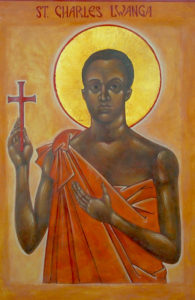 In the 1880s, missionaries introduced Christianity into the Ugandan kingdom of Buganda. Fearing for their power, witch doctors persuaded king Mwanga that the new religion would undermine his authority.
In the 1880s, missionaries introduced Christianity into the Ugandan kingdom of Buganda. Fearing for their power, witch doctors persuaded king Mwanga that the new religion would undermine his authority.
The eighteen-year-old ruler was alcoholic and addicted to sexual relations with boys. In May, 1886, he tried to seduce a page and discovered that a young man was instructing him in the faith. Enraged, he drove a spear through the catechist’s neck. Then he demanded that all the Christian pages renounce their faith or face death. They chose death. So, on June 3, 1886, he had them executed at Namugongo, a place of ritual sacrifice.
Charles Lwanga, a young leader, who had protected the pages, was the first to be martyred. A page, who was pardoned, described his death:
“We set out walking in single file, a rope from neck to neck joining us. Every one of us prayed in his heart, but not aloud. When we arrived in the valley we were ordered to halt where the high executioner, Senkole, and a crowd waited.
“Senkole separated Charles from the others, saying: ‘This is the man of my choice. He’ll be my victim.
“Lwanga said to us: ‘Friends I am staying here. Good-bye! We shall meet again in heaven.’ With one voice we answered, ‘Yes, before the throne of God. Au revoir.’”
Charles was laid on a pyre under which the fire was kept low. The flame slowly charred his legs without touching the rest of his body. A witness remembered:
“Senkole said to Charles: ‘Let’s see whether Katonda (God )will come to deliver you from the fire.’
“Bearing his agony without a murmur, Charles said: ‘Poor, foolish man, you don’t know what you say. You are burning me, but it is as if you were pouring water on my body. I die because of the religion of Katonda. But you, you will see trouble. Katonda, whom you insult, will one day plunge you into real fire. Sir, if you only you would become a Christian.’”
Charles prayed quietly while the fire slowly did its work. Just before the end, he cried out, “Katonda wange!” (My God!) and died.
Then the other pages were stripped, wrapped in reed mats, piled on a huge pyre and burnt alive. “We have killed many people,” said one executioner, “but never such as these. Other victims did nothing but moan and weep. There was not a sigh, not even an angry word. All we heard was a soft murmur on their lips. They prayed until they died.” That day, thirteen Catholics, eleven Protestants and eight unbaptized seekers, ranging in age from 13 to 25, offered their lives in the flames.
“A well,” said one of the martyrs prophetically, “that has many sources never runs dry. When we are gone, others will come after us.” Already by 1890, the number of Christians in Buganda was estimated at 10,000.
Read more from Bert at his website www.BertGhezzi.com, or check out his many books on Amazon.
The post Learning from Young Models of Fortitude and Joy appeared first on Brandon Vogt.





May 24, 2016
[Video] William Lane Craig Speaks on Philosophy and Evangelization at Catholic Seminary
Back in April, William Lane Craig delivered the prominent 2016 Meyer Lecture at Mundelein Seminary. Craig is arguably the leading Christian apologist in the world. Focusing especially on atheism, science, and the Resurrection, he regularly debates philosophers and scientists on questions surrounding God. He’s so polished, clear, and brilliant that in a debate with skeptic Sam Harris, Harris described him as “the one Christian apologist who seems to have put the fear of God into many [atheists].”
If you aren’t familiar with Craig’s books—especially Reasonable Faith or On Guard—or his ministry and website, ReasonableFaith.org, they’re worth checking out. You’ll find clear, helpful answers responds to the most pressing challenges posed by skeptics today.
Though a Protestant, Craig was invited to the lecture series at Mundelein Seminary, the largest Catholic seminary in America. Around 200 young men study there in preparation for the priesthood. Craig was asked to help them better understand how philosophy fits into the mission of evangelization.
Watch and enjoy his two lectures below!
LECTURE #1 – “What Philosophy Offers the New Evangelization”
LECTURE #2 – “Methods for Sharing the Gospel on College Campuses”
The post [Video] William Lane Craig Speaks on Philosophy and Evangelization at Catholic Seminary appeared first on Brandon Vogt.





May 23, 2016
Dr. Peter Kreeft said THIS course is better than 99% of all others (!!)
Did you see what Dr. Peter Kreeft said about my new “Read More Books Now” Video Course?? I’m blown away:
“I’ve taught college philosophy for over 40 years. This excellent course, if taken to heart, will do more for your education than 99% of the courses in school that you ever took.”
And here’s what blogger T.J. Burdick recently tweeted:
There’s still time for YOU to sign up before time runs out!
Just click here to join hundreds of others who are learning how to DOUBLE their reading:
Click here → “Read More Books Now” Video Course
See you on the inside!
PS. Remember that registration closes this Thursday, May 26 at midnight ET. After that the doors close, the bonuses disappear, and you will NOT be able to sign up. So even if you don’t think you’ll be able to watch the videos until some time in the future, you want to sign up NOW before registration closes for good.
PPS. Today is my 30th birthday! Which. Is. Crazy. What happened to my twenties? Any advice for my thirties??
The post Dr. Peter Kreeft said THIS course is better than 99% of all others (!!) appeared first on Brandon Vogt.





May 19, 2016
My new course: “Read More Books Now” Video Course

Over the last couple weeks, thousands of people have joined in for our free video series on becoming a better reader.
I hope you enjoyed the videos! I was blown away by all the comments. Over 800+ people left comments including many who said they’re already reading more!
Well, I have some exciting news today…
In the last video, I promised to let you know about a brand new 10-part video course I’ve been working on….
….and so here it is!
The course just went live a few minutes ago:
Click here → “Read More Books Now” Video Course
 If you liked the free video series, you’re going to LOVE this full-blown course!
If you liked the free video series, you’re going to LOVE this full-blown course!
I only had a small amount of time in the free video series, but there was SO much more to cover. That’s why I created this full-blown video course. It goes 10x deeper than the free videos and gathers the BEST reading tips from the world’s BEST readers.
Imagine how much better your life would be if you could DOUBLE the number of books you read!
What would you want to learn?
Would you try to learn a new language or skill?
Start a new business?
Read those novels you’ve been wanting to enjoy?
The possibilities are literally endless.
And that’s what you’ll be able to do after finishing the “Read More Books Now” Video Course.
But here’s the thing:
You definitely want to sign up NOW.
Two reasons why:
First, registration for the video course will CLOSE next week on Thursday, May 26. After that, you WILL NOT be able to get in. So don’t delay! Don’t procrastinate! Don’t say, “Ah, I’ll do it later”. We both know you’ll forget and then you’ll miss out. Now is the time!
Second, if you sign up TODAY, I’ll toss in two FREE bonuses:
BONUS #1 – Teddy Roosevelt’s FIVE Reading Secrets eBook (PDF)
BONUS #2 – Special Reading Strategy Bookmarks
Sign up today → Get Video Course + 2 FREE Bonuses!
(Note: the bonuses will also expire on Thursday, May 26. You will not be able to get them after that.)
So if you want to get access to the complete 10-part “Read More Books Now” Video Course AND both special bonuses, then sign up NOW:
https://readmorebooksnow.com/reading-course
The skills you learn in this course will serve you for the REST of your life.
You’ll look back and think this was one of the best decisions you could have made.
So don’t miss out!
Take advantage now.
And I’ll see you on the inside of the course!
PS. Thousands of people will be clicking over to the registration page today, so if you aren’t able to get in right away, please hang tight and try reloading the page. I just want to make sure you have a chance to get in!
The post My new course: “Read More Books Now” Video Course appeared first on Brandon Vogt.





May 12, 2016
[Video] How the world’s best readers make time to read…

I hope you’re enjoying the FREE video series on how to double the number of books you read!
In Video #1, which I posted a couple days ago, I revealed the two biggest challenges people face when reading:
“I don’t have enough time to read”
and
“I just can’t focus when I read.”
Today, in Video #2, I’ll help you conquer that first challenge (“I don’t have enough time to read”).
You’ll discover several powerful ways to squeeze more books into your life….
….even if you’re the busiest person on earth!
Click here to watch the video:
https://readmorebooksnow.com/video-2-make-more-time-for-reading
If you’re like me, your life is really, really busy. With work and family, meetings and practices and all sorts of responsibilities, it’s just hard to find time to read.
But in this video you’ll get 2 simple strategies that the world’s best readers use every day to squeeze books into their busy schedule.
Just click here to watch and learn:
Watch Video #2 → How to Make More Time for Reading
Be sure to leave a comment underneath the video answering the question at the end. I’d love to hear from you!
Also, be on the lookout for Video #3, which I’ll post in a few days.
Enjoy!
PS. Can you do me a favor? Please share this link on Facebook or email it to friends. I really want to help more people: http://ReadMoreBooksNow.com
The post [Video] How the world’s best readers make time to read… appeared first on Brandon Vogt.





Brandon Vogt's Blog
- Brandon Vogt's profile
- 75 followers




